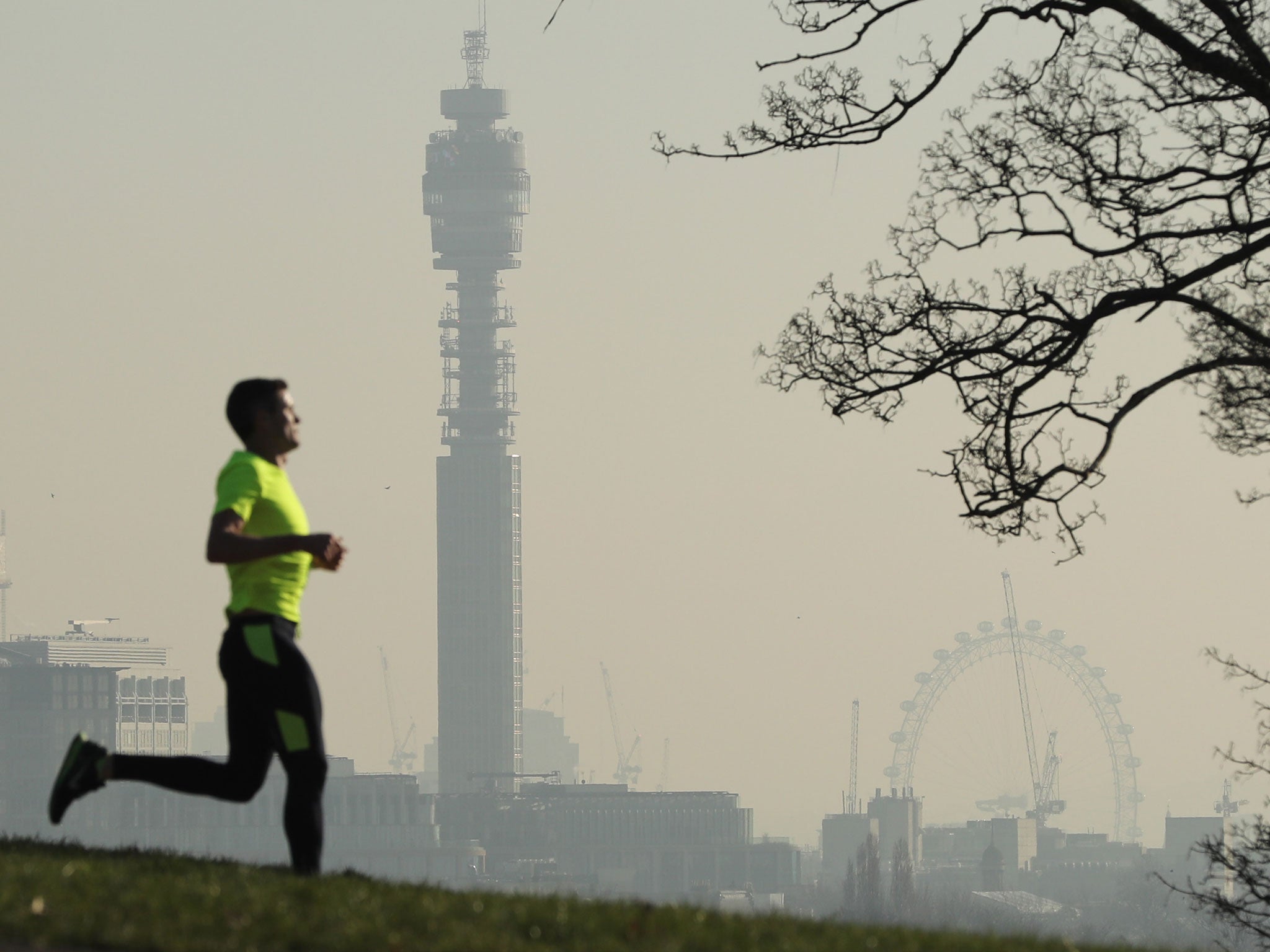Air in 44 UK cities and towns too dangerous to breathe, UN pollution report finds
Millions of people inhaling fine particles linked to heart disease and premature death

Your support helps us to tell the story
From reproductive rights to climate change to Big Tech, The Independent is on the ground when the story is developing. Whether it's investigating the financials of Elon Musk's pro-Trump PAC or producing our latest documentary, 'The A Word', which shines a light on the American women fighting for reproductive rights, we know how important it is to parse out the facts from the messaging.
At such a critical moment in US history, we need reporters on the ground. Your donation allows us to keep sending journalists to speak to both sides of the story.
The Independent is trusted by Americans across the entire political spectrum. And unlike many other quality news outlets, we choose not to lock Americans out of our reporting and analysis with paywalls. We believe quality journalism should be available to everyone, paid for by those who can afford it.
Your support makes all the difference.Millions of people living in dozens of British cities are inhaling air considered too dangerous to breathe by the World Health Organisation, a report has shown.
Out of 51 UK cities and towns listed in an air quality database, 44 fail the WHO's test for fine sooty particles smaller than 2.5 microns across that have been linked to heart disease and premature death.
Exposure to the particles, known as PM2.5s, should not exceed 10 micrograms per cubic metre of air, according to the health organisation.
But in numerous British population centres annual average levels are higher, sometimes by a significant degree, it is claimed.
Glasgow emerged as one of the polluted cities, with a PM2.5s concentration of 16 micrograms per cubic metre.
London and Leeds both had 15 micrograms of the particles in every cubic metre-sized parcel of air, Cardiff and Birmingham 14, and Manchester 13.
Perhaps surprisingly, the seaside resort of Eastbourne and port city of Southampton equalled London's exposure level, while the dreaming spires of Oxford were surrounded by air as polluted by fine particles as Cardiff.
Each year, outdoor air pollution is estimated to cause 40,000 premature deaths in the UK - up to 9,000 in London alone - and cost the country £22.6 billion.
Dr Toby Hillman, one of the report's authors from the Royal College of Physicians, said: “There isn't a safe limit for the amount of pollution that's been defined as yet and we know the effects of poor air quality run from cradle to grave; it's a lifetime threat to human health.
“This is a really direct and tangible impact on UK health from the drivers of climate change, and taking action on air quality should be a priority.”
The impact of air pollution in UK cities forms part of a major investigation looking at the health and social costs of climate change around the world led by a top medical journal.
The Lancet Countdown on Health and Climate Change brought together 24 institutions and inter-governmental organisations including the WHO and World Meteorological Organisation.
It found that global exposure to dangerous levels of air pollution caused by burning fossil fuels had increased by 11.2 per cent since 1990 with more than 70 per cent of cities exceeding WHO PM2.5 limits.
Many British cities and towns also broke the WHO limits for PM10s, slightly larger sooty specks considered less of a hazard than ultra-fine particles but still harmful to health.
The authors acknowledged that European Union air quality guidelines were far less stringent than those of the WHO, with an upper safety limit for PM2.5s of 25 micrograms per cubic metre.
However, they said the WHO limits represented a “safer threshold”.
The report added that 802 London schools and a high proportion of the capital's hospitals and clinics were located in highly polluted areas “potentially putting some of society's most vulnerable people at risk”.
Diesel-powered vehicles, which generate pollution particles, were one of the “key drivers” of poor air quality in towns and cities in the UK, said Dr Hillman.
“Unfortunately previous policies about encouraging diesel adoption have led to an increase in the amount of diesel related pollution,” he said.
In a “briefing for UK policymakers” the report called for the expansion of Clean Air Zones nationwide and wider introduction of measures similar to London's new T-charge, which imposes a levy on drivers of the most polluting vehicles.
The report pointed out that between 2000 and 2016 there had been a 46 per cent increase in the number of weather-related disasters around the world. During the same period of time 125 million vulnerable adults over the age of 65 had been exposed to heatwaves.
In addition, climate change had increased the threat from mosquito-borne infectious diseases.
Transmission of dengue fever by the Aedes agypti mosquito had increased by 9.4 per cent since 1950.
Professor Hugh Montgomery, co-chair of The Lancet Countdown and director of the Institute for Human Health and Performance at University College London, said: “We are only just beginning to feel the impacts of climate change.
“Any small amount of resilience we may take for granted today will be stretched to breaking point sooner than we may imagine.”
Dr Penny Woods, chief executive of the British Lung Foundation, said the Government should end incentives to buy diesel vehicles and commit to a new Clean Air Act.
She added: “This study reveals the tragic reality that the most polluted areas are exactly where our most vulnerable are - schools, hospitals and clinics. The extent of the public health emergency we are facing demands nothing less than urgent action to protect our lung health.”
Press Association
Join our commenting forum
Join thought-provoking conversations, follow other Independent readers and see their replies
Comments